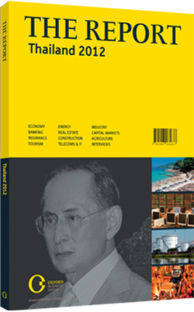OBG talks to Chartsiri Sophonpanich, President, Bangkok Bank, and Chairman, Thai Bankers’ Association

Interview: Chartsiri Sophonpanich
What impact, direct and indirect, did the floods in late 2011 have on the Thai banking system?
CHARTSIRI SOPHONPANICH: The economy weakened in the fourth quarter of 2011 due to the flooding, with GDP falling by 9% year-on-year. Thailand’s full-year growth rate was around 0.1%, well below the original forecast of 4-5%. With many factories being shut down, the industrial production index fell by 47% in November. The direct impact on the banking sector included the temporary closure of some branches and ATMs in flooded areas, but there was no significant disruption to overall banking services. Banks have been involved in the flood recovery effort, with many special terms and conditions provided to customers, while the government has introduced a number of soft loans for affected business.
The economy should rebound swiftly as the industrial sector rebuilds, and the industrial production index for February 2012 was down by only 3.4% on the previous year. The government must reorganise its priorities following the flooding, and is aiming to put more money into the hands of low-income earners, especially younger people. This will provide an opportunity for banks targeting this market.
What opportunities arise from the move towards the ASEAN Economic Community in 2015?
CHARTSIRI: The trend of Thai corporations and small and medium-sized enterprises expanding overseas will intensify, as they need to develop competitiveness prior to regional economic integration. A common market within ASEAN and the countries with which ASEAN members have free trade agreements will require an expanded production base in South-east Asia, encouraging stronger investment, capital and trade flows both within and into the region. The major Thai banks are responding to the needs of their customers by setting up or expanding international operations focused on this part of the world. Within ASEAN, Thailand, Indonesia, Vietnam and Myanmar are among the countries with the highest potential as investment destinations.
Over the longer term, what do you see as the appropriate role of foreign banks in the Thai market?
CHARTSIRI: Competition is intense. There are now 16 domestic banks and 15 foreign banks in Thailand, and, in line with the second phase of the Bank of Thailand’s Financial Sector Master Plan, liberalisation of the financial sector will continue. Foreign banks already in Thailand will be permitted to request the opening of up to two additional branches. They may also apply to change the status of their local operation to that of a subsidiary, and would then be permitted a maximum of 20 branches and 20 off-premises ATMs. The Bank of Thailand will also announce in 2012 the criteria for attaining Qualified ASEAN Bank status, which will allow banks from ASEAN to enter the market, starting in 2013, in return for reciprocal privileges in their home countries.
What are the prospects for the development of alternative sources of funding?
CHARTSIRI: Venture capital and private equity will take time to develop. In Thailand, quality companies are easily able to raise funds through bank loans or equity and bond markets. Also, the government is currently studying the possibilities and alternative models of infrastructure funds to mobilise public financing for some of our infrastructure projects. As several long-term Thai corporate bonds have been well-received by investors, similar infrastructure bonds should find a market.
What policies should be implemented to facilitate access to bank credit for micro-enterprises?
CHARTSIRI: A recent initiative between the Asian Development Bank and the Ministry of Finance will result in a new policy framework for providing low-income Thais with improved access to services such as microfinance, remittances, pensions and mobile banking. However, given the limited geographical reach of our existing commercial bank branch network, alternative channels of financial intermediaries should be developed to provide access to the poor, especially in remote rural areas.
You have reached the limit of premium articles you can view for free.
Choose from the options below to purchase print or digital editions of our Reports. You can also purchase a website subscription giving you unlimited access to all of our Reports online for 12 months.
If you have already purchased this Report or have a website subscription, please login to continue.

